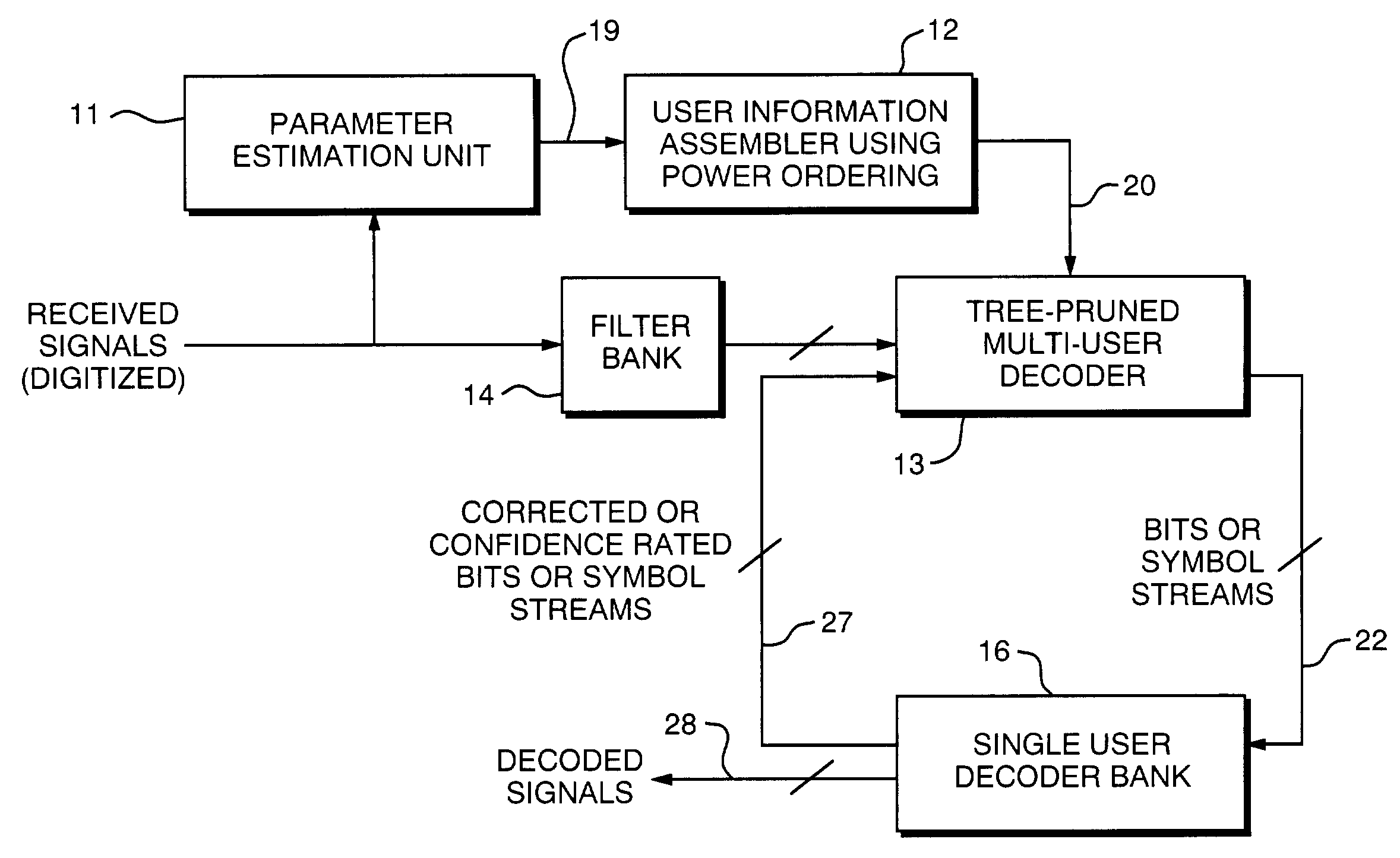Method and apparatus for optimizing tree pruning in a multiuser detector
a multi-user detector and tree pruning technology, applied in the field of communication, can solve the problems of increasing the infrastructure cost, reducing the number of signals received by the detector, and not always economically feasible, and reducing the cell size or reducing the number of signals
- Summary
- Abstract
- Description
- Claims
- Application Information
AI Technical Summary
Benefits of technology
Problems solved by technology
Method used
Image
Examples
Embodiment Construction
[0026]FIG. 1 shows a simplified block diagram circuit of a portion of prior art receiver with the novel addition of re-ordering the users assigned to the levels of the tree-pruned, multi-user (MUD) decoder 13 based on the power level of the received signals associated with each user or transmitter at each symbol interval. Not shown in FIG. 1 is other typical receiver circuitry used to receive radio frequency signals and that prepare the received signals for decoding by decoder 13. In addition to decoder 13 there is also a parameter estimation unit 11 and a user information assembler using power ordering unit 12.
[0027]More particularly, with the teaching of the present invention the levels of the decoding tree constructed in decoder 13 (described with reference to FIG. 3) are ordered by assembler using power ordering unit 12 such that the received signal having the highest signal strength is assigned to the lowest level (root) of the decoding tree and the weakest signal is assigned t...
PUM
 Login to View More
Login to View More Abstract
Description
Claims
Application Information
 Login to View More
Login to View More - R&D
- Intellectual Property
- Life Sciences
- Materials
- Tech Scout
- Unparalleled Data Quality
- Higher Quality Content
- 60% Fewer Hallucinations
Browse by: Latest US Patents, China's latest patents, Technical Efficacy Thesaurus, Application Domain, Technology Topic, Popular Technical Reports.
© 2025 PatSnap. All rights reserved.Legal|Privacy policy|Modern Slavery Act Transparency Statement|Sitemap|About US| Contact US: help@patsnap.com



